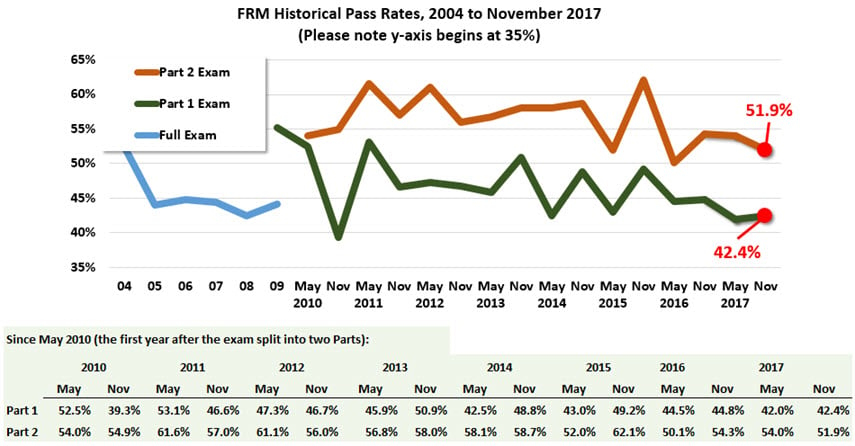On January 6th, 2017 GARP posted the pass rates for the November 2016 exam:

- The November 2016 Part 1 (P1) pass rate was 44.8% and
- The updated long-term average P1 pass rate is 46.8%
- The November 2016 Part 2 (P2) pass rate was 54.3%.
- The updated long-term average P2 rate is 56.8% which is about 10.0% higher than the long-term average P1 pass rate (my long term averages include 14 exams from 2010 to 2016 inclusive).
- Both recent pass rates were at least 2.0% below the historical long-run average (November 2016 Part 1 was 2.1% below the prior average; November 2016 Part 2 was 2.7% below the prior average).
- The recent seasonal trend failed to re-appear for Part 1 but did show muted recurrence for Part 2. I previously itemized the P1 season trend here, but you can see below that in the last two years we had been seeing an alternating trend of lower pass rates in May followed by higher pass rates in November. This did not happen for Part 1 in November.
- The difference in P1 versus P2 pass rates in November was about 9.5%, and this is fairly consistent with history: the P2 pass rate tends to be 9.0 to 10.0% higher than the P1 pass rate.

Last edited:



 (easier said than done, I'm sure ....)
(easier said than done, I'm sure ....)
